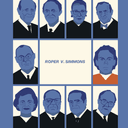
Longtime civil and human rights lawyer, Diann Rust-Tierney, the executive director of Georgetown University’s Racial Justice Institute, joins Death Penalty Information Center executive director Robert Dunham in the first DPIC podcast of 2023 for a discussion of race, human rights, and the U.S. death penalty.
Prof. Rust-Tierney, who served as the Robert F. Drinan visiting professor at the Georgetown University Law Center Human Rights Institute in 2020 – 2021 after sixteen years as executive director of the National Coalition to Abolish the Death Penalty, argues that capital punishment has long been misperceived as a normal public safety tool. The reality, she says, is that “from its very beginning in history, [the death penalty] was part of a legal and social system designed to keep various races in their place.” Rust-Tierney says that racial disparities in the application of the death penalty are not “unfortunate byproducts” of the punishment’s legacy of slavery, lynching, and Jim Crow segregation. “I’ve come to understand that the death penalty is actually operating exactly as it was intended. It is intended to teach us whose lives are worth valuing and whose lives are not.”
In her 2022 Drinan Chair Lecture on Human Rights, Prof. Rust-Tierney detailed the relationship between capital punishment and the legacy of what she calls the “American racial caste system.” In the podcast, Rust-Tierney describes the criminal laws of the antebellum South, which expressly condition what constituted a capital crime and the length of non-capital punishments upon the race of the defendant and the race of the victim. She discussed with Dunham “the strange and close relationship between lynchings… and the death penalty,” a “hand-in-glove relationship” that is “not about crime control, not about public safety, not even about actually doing justice. It’s about making it clear who’s in charge, making it clear who makes the big decisions. And the big decisions are, who deserves to live and who deserves to die.”
Asked by Dunham how one changes the paradigm through which the death penalty is viewed from a criminal legal issue to a fundamental question of human rights, Rust-Tierney stressed the importance of understanding both the history that led to the modern death penalty and the reality that the death penalty is neither about nor contributes to public safety. “I also think it’s about showing people a different way,” Rust-Tierney says. “It is tackling the real problem of public safety in a way that makes sense, really investing in understanding why we are experiencing the issues that we are experiencing around public safety. “Where have we not made the investments in mental health services and housing and jobs in supporting families that we ought to do? Again, the death penalty has been a diversion, it’s been a distraction, and it’s been a delusion that we’ve engaged in that has prevented us from getting to the heart of these problems.”
Rust-Tierney believes that this “is an important time to be having [a] conversation” about the death penalty as a human rights issue “because we are in what I believe to be a global struggle for human rights, a global struggle for democracy. And there are real forces at work in ambitious and violent ways to undermine that, and to really snuff out the hope and even prayer of human rights and democracy and, really, self-determination.”
She “100 percent” sees parallels between anti-democratic practices by the U.S. states who are now using the death penalty and the human rights abuses and anti-democracy practices of autocratic governments abroad: states that are emphasizing secrecy instead of transparency; states that impair people of color from jury service, either through laws that restrict who can serve on a jury or through the discriminatory use of jury strikes; and state officials attempting to oust locally elected prosecutors who have said they will not seek the death penalty or will seek it more sparingly. “There is a connection,” Rust-Tierney says, between death-penalty usage and “states that are trying to oppress a significant segment of their population, through voter suppression through a whole range of things.”
The United States, she argues, is “as susceptible to threats to our democracy and human rights as any other country …. [I]t’s time to stand on the side of either democracy and self-determination, human rights on this side or on the side of autocracy and oppression …. [W]e have to fight for democracy. And part of that is getting rid of the death penalty because it is a tool of the autocrat.”



